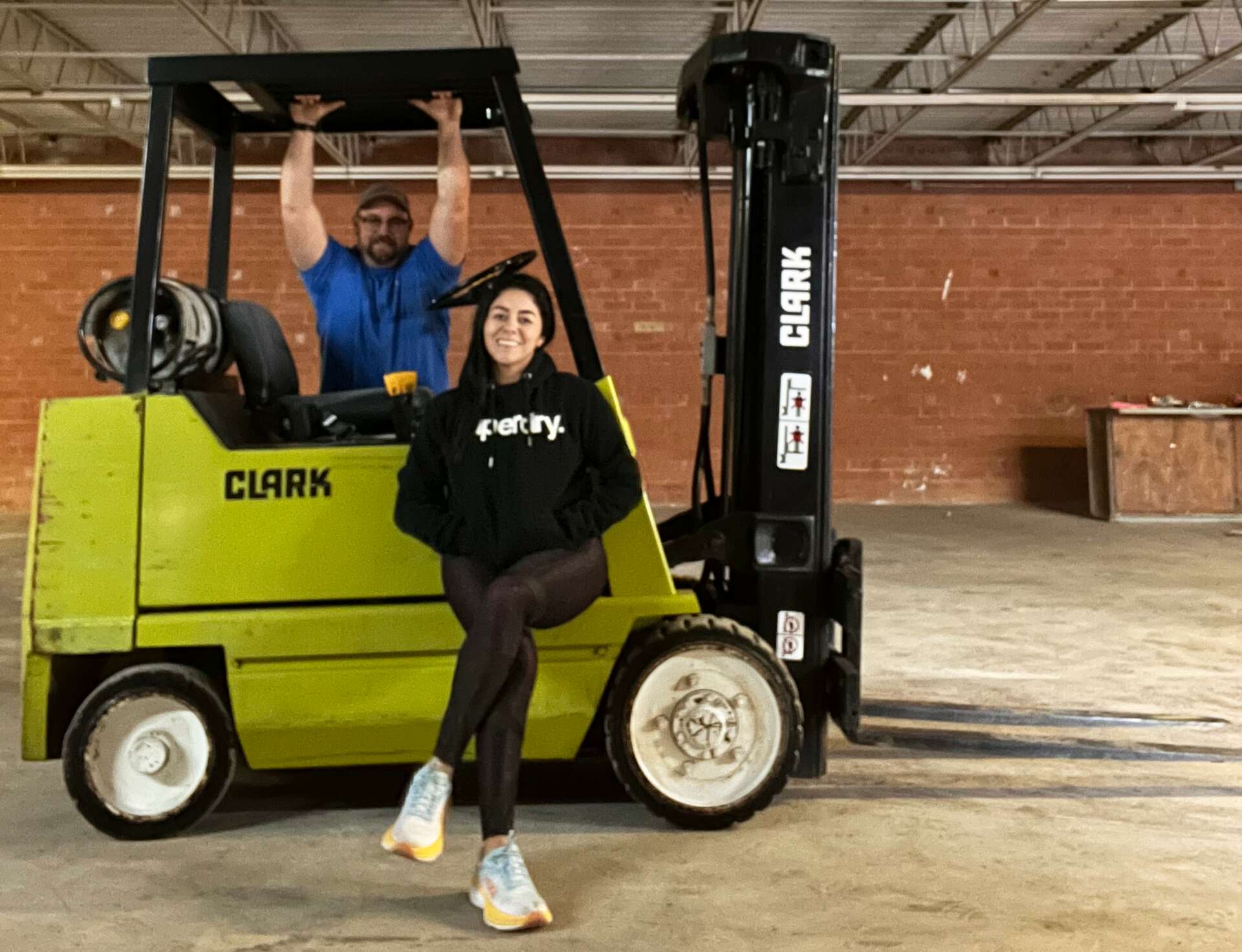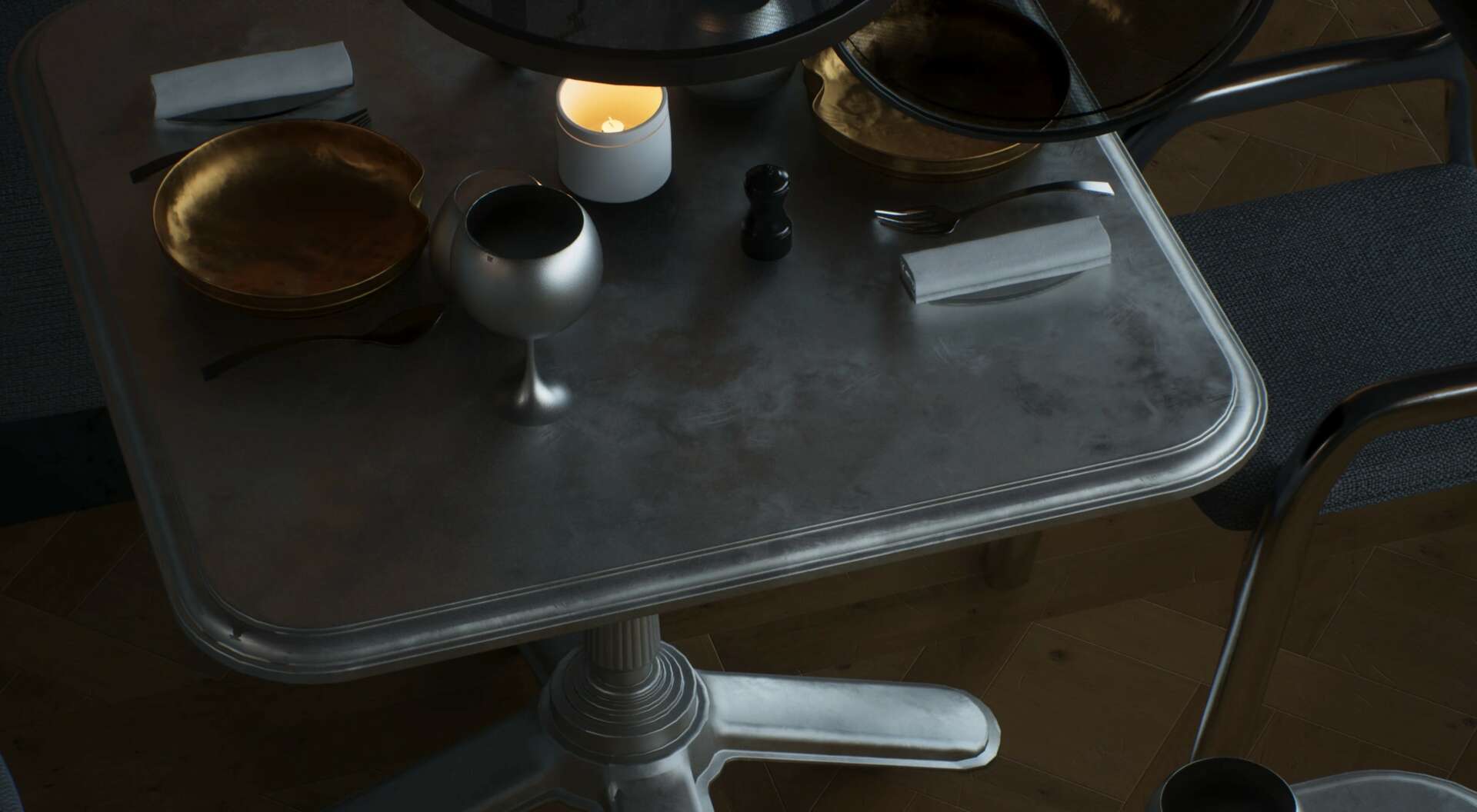Alright – so today we’ve got the honor of introducing you to Lonnie Coulter. We think you’ll enjoy our conversation, we’ve shared it below.
Lonnie, thanks for taking the time to share your stories with us today Let’s kick things off with your mission – what is it and what’s the story behind why it’s your mission?
We provide high-quality, living metal surfaces and an unrivaled customer experience through smart design and manufacturing— We bring our customer’s projects to life. These take the form of tables, bartops, and sculptural elements in zinc, brass, and copper.
Our mission is quite simple, and it is based on our desire to help others. We believe in guiding teams of designers, contractors, and operators to exciting products that will benefit them as they express their vision. We want to be the spark that helps tell the narrative of the space.

Lonnie, before we move on to more of these sorts of questions, can you take some time to bring our readers up to speed on you and what you do?
I was trained as a designer, but as the son of a carpenter and a mathematics instructor, I have always solved problems in the space between theory and built objects. For many years I solved technical and design problems for companies that were making physical products, and I gained many insights from each of these positions.
I began to notice that the skill set I had built was unique from others and that my aptitude was suited for more than solving problems for manufacturing facilities; I wanted to help the end user directly, so I transitioned to set up my own production. I found that my ultimate goal of helping create the perfect product could only be achieved if I guided the company culture, protocols, and design vision as components driven by customer input.
I have a pretty diverse resume with some amazing companies. I have worked in exhibit design completing projects like the H.L. Hunley submarine exhibitry fabrication. I was a programmer at a millwork manufacturer that made solid wood doors and custom trim, and I worked for a large company that makes furniture frames for upholstered goods. In addition to establishing a new manufacturing production for a company that makes the world’s finest brass saxophone mouthpieces, I rebuilt and expanded a sustainable daylily farm in western North Carolina, and I even restored an 1893 Victorian home in Savannah that was once slated for demolition. Each one of these endeavors was unique, but the outcome for each was tasked with the same challenge ̶ What story is being told?
For each of these projects, the narrative was critical. From telling the history of an object like a recently recovered submarine or a decaying Victorian home, to the mouthpiece that lets an artist express their sound fully, each project comes into focus with small details. Many times, it’s conscious and the outcome is beautiful. Sometimes, our vision is limited by the technical aspects of what is physically possible.
I began working in decorative metal in Savannah after my master’s degree in furniture design. I was familiar with break form sheet metal and its limitations from years of helping my father break trim coil to complete flashing details for sunrooms. I came across companies that were dabbling with techniques to make decorative objects such as bartops and counter tops in non-break form methods. I decided to stay in this area and focus on the value that we could provide clients.
Our team spent several years developing a new product and process that allows us to create real metal surfaces for tables, bar tops, and furniture in zinc, brass, and copper with unique, custom, and complex geometries not possible with machining or break forming. Our products start with custom geometries we have developed, and they allow nearly infinite customization. This means that our team can fabricate that custom table in brass that you’ve had in your head with the little rounded detail that allows the edge to reflect the light just so, and we can do it in 3 custom sizes without extending the delivery date for these options. We like to think of ourselves as a design studio that also manufactures.
We thrive on the ability to help our clients’ ideas shine and take form; our ability to tell their story is what sets us apart from others. The powerful customization we place in the hands of our clients is next level, and our products sit with some of the greatest concepts ever brought to life ̶ from amazing designers to legendary chefs, we’re happy for our products to serve as the backdrop or the centerpiece for the narrative our clients choose.
Okay – so how did you figure out the manufacturing part? Did you have prior experience?
First, let’s start with the basics of our product. Why do we make zinc, brass, and copper tops? As a quick exercise, think about the decorative surfaces with which you are most familiar. Stone, wood, laminate, and engineered products probably come to mind. But what about metal? While stainless and aluminum are probably top of the list, have you ever seen them without eased, square edges? Have you felt their cold temperature? Can you name a third metal that you regularly see, which isn’t stainless steel or aluminum?
Enter living metals: a selection of warm materials that are easily patinated or altered in surface tone. Zinc, brass, and copper are some of the most common, and these decorative metals are much more adaptable and option-friendly than stainless or aluminum; they can be modified much more easily, and they give us an expanded design palette. We started 3 Spark Design specifically to marry the need for beautiful, durably designed living metal tops with technologies that allowed our clients’ visions to take form. We knew that no one else had this capability, because we have been in this industry for more than a decade.
The classic problem is this: sheet metal can only bend in one axis without some intensive hand work or complex stamping/tool making/cast and mould processes. Plastic resins and paint have been used to emulate similar surfaces, but these options feel very disingenuous. How do you get real metal to bend and deform in two or more directions while retaining the beauty and durability for which it was originally intended? The answer, or course, is a form of alchemy ̶ a new process with established technology.
We began our approach to this process by distilling the topics customers had identified over the years, and we designed a new product that addressed these concerns. A real, durable metal that can bend beautifully and predictably in multiple ways to create gorgeous geometry. While it sounds simple, you need a pretty detailed understanding of manufacturing to establish what is physically possible now and where the capabilities can advance in the future.
We knew the products that were available after years in the market. We also knew that no one could execute what we had envisioned without a new manufacturing approach, so we combined several separate processes from different manufacturing solutions. As we were raising capital, we were asked many times about approaching an existing company to develop a prototype. Ultimately, we knew that this was not possible; our product is in many ways our process.
We have learned so much along the way, but the most important lesson is actually counterintuitive. Most consultants online instruct companies to just get up and going with something, anything to produce cashflow, but in most small manufacturing startups, this is wrong. Undercapitalizing your initial investment in a niche market just to get an MVP generally results in an inferior product that hamstrings a company for years to come or immediately puts you out of business.
If you’re inundating a market with a flawed product, hoping to eventually profit enough to reinvest in the equipment to correct the flaw and solve the problem, then why not just produce a better product from the beginning? Delay your start and raise the additional capital to do it the right way. Otherwise, you’ll be stuck in an indefinite and terrifying limbo.

Any advice for managing a team?
Teams thrive when members understand specific roles, when you provide training and encouragement, when you measure results and provide feedback, when constructive grievances are taken seriously and a limited number of rules help order the workplace, and when each member is rewarded, both monetarily and through appropriate praise. Team members are done with long hours that don’t result in something tangible. Folks want a goal, and they want to share in the company’s success. People are still willing to work hard, but not for someone who has no vision and no plan for the future.
A clear path forward, rewards, and time away from work are all necessary for the team members in today’s environment. You can’t control every variable, but you can make work as rewarding as possible by letting your team members focus on specific tasks for short periods of time and stripping away all the unnecessary rules that create disgruntled attitudes. My grandfather always said that if you take care of your people, they will take care of you, and I believe this 100%.
Contact Info:
- Website: www.3sparkdesign.com
- Instagram: https://www.instagram.com/3sparkdesign/
- Facebook: https://www.facebook.com/3SparkDesign
- Linkedin: linkedin.com/in/3-spark-design-llc-111020255
- Twitter: @3SparkDesign1
- Youtube: https://www.youtube.com/@lonniecoulter7868


